Chilean Harvest Update: Arrival Dates
Chilean Harvest Update: Arrival Dates
The wines of Chile – along with the winemakers and vineyards that produce them – have had some profound transformations in the past 30 years. Grape growers have successfully determined which varietals thrive in their vineyards, have experimented with unique trellising systems, and explored interesting new areas for planting. The wines now have a head start because of the wonderful grape quality.
The winemakers have been upping their game by attending classes and working in wineries abroad – bringing back with them modern winemaking practices from the finest winemaking regions across Europe and the USA. Even highly regarded, award-winning winemakers from other countries are moving to Chile so they can take advantage of the country’s grape quality – and to have full creative control to craft spectacular wines. It’s crazy awesome that we are able to receive the same high quality grapes and winemaking opportunities people travel so far to achieve. We are lucky to be a part of this wine journey with the vineyards and winemakers of Chile.
The grapes will be harvested very soon. Below is more in-depth information about the vineyards and the potential arrival dates. The season will be early, so dust off the crush pad, sanitize your equipment, and get ready for some fantastic winemaking.
We will have a Bootcamp class running during the Chilean Season. If you would like to join or hear more information please email Christina at cmusto@juicegrape.com. Spaces are limited and the class will be starting soon.
Potential Arrival Dates for Chilean Grapes
- April 18th
- Sauvignon Blanc
- Chardonnay
- Viognier
- Pinot Grigio
- May 2nd
- Malbec (small amount)
- Merlot
- Syrah
- May 9th
- Petite Verdot
- Malbec
- Pinot Noir
- Carmenere
- Cabernet Sauvignon
- May 16th
- Malbec
- Carmenere
- Cabernet Sauvignon
- Cabernet Franc
Chilean Juice: The juice should start arriving around May 2nd. We will have more updated when the containers are loaded.
Official Pinotage Numbers Are Here
Official Pinotage Numbers Are Here
Brix = 25 (no adjustment required)
Starting pH = 3.91
Starting TA = .62
Added 1.5gm Tartaric Acid per liter
Final Number are pH = 3.50 & TA = 0.75
In conclusion, the final numbers are very good!! Looking forward to seeing how this vintage turns out!
#whydoesittakesolong?
2016 Pinotage Arrival
The Pinotage has arrived!! The berries taste very sweet with good seed and pulp development. We got Brix readings of 23-24.5. We will be calling all of the people who pre-ordered today. However we do still have a small amount available for sale.
Gives us a call at 877.812.1137 to pick up you Pinotage grapes!
Also, we are still deciding which yeast to use for the Pinotage grapes. The three options we thought about are D254, D80, and BDX. Below are the descriptions of each yeast.
(all descriptions via Scott Laboratories)
- D254: “In red wines, Lalvin ICV D254® develops ripe fruit, jam and cedar aromas together with mild spiciness. On the palate it contributes high fore-mouth volume, big mid-palate mouthfeel and intense fruit concentration.”
- D80: “Given proper nutrition, Lalvin ICV D80® is a rapid starter with moderate fermentation rates. It has been known to have an alcohol tolerance of up to 16% (v/v) when the fermentation is aerated and the temperature is maintained below 28°C(82°F). On the palate it creates high fore-mouth volume, big mid-palate mouthfeel, an intense, fine-grain tannin sensation and a long lasting licorice finish.”
- BDX: “Uvaferm BDXTM is a vigorous fermenter. Alcohol tolerance can be up to 16% (v/v). Optimizes color and structure with soft tannin extraction and increased mouthfeel. Does not generate a lot of heat during fermentation. Selected from the Pasteur Institute strain collection in Paris, France.”
Which yeast do you think we should use?
Cheers! 🍇🍷
2016 HARVEST OUTLOOK FOR CHILE
2016 HARVEST OUTLOOK FOR CHILE
Musto Wine Grape Company, LLC. has been importing quality Chilean wine grapes for over 10 years. We have developed long lasting relationships in Chile and are constantly growing and developing the program. The vineyards are located between the Andes Mountains and Pacific Ocean. Therefore, the vines have excellent growing conditions for perfect ripeness and complexity thanks to the ocean breeze and Mediterranean climate.
The Curico Valley has been a wine grape growing region since the 1800’s and is located about 115 miles south of Santiago in the Central Zone of Chile. It is known as the “Heart of the Chilean wine industry”. Curico has the perfect fertile soil and is best known for its micro climates and the ability to grow over 30 different wine grape varieties. Situated along the Guaiquillo River and nestled between mountains on its east and west sides, Curico’s Mediterranean climate and unique topographical features helps to create some of the finest wine grapes in South America.
The climate in the valley is characterized by morning fog and wide day-night temperature fluctuations. Climatic conditions in some parts of the valley favor wines with higher acidity, such as white varieties including Chardonnay, Sauvignon Blanc, Vert and Gris. High quality Cabernet Sauvignon, Syrah, Merlot, and Carménère grapes are sourced from warmer areas of the valley, such as Lontué, particularly when produced from ancient vines.
Terroir: Sandy, clay, decomposed granite, volcanic-alluvial
It has been a hot and dry season in Chile, thus producing a light but intense crop. The fruit looks to be well balanced with a lot of flavor. We will have multiple shipments from Chile this year. The first container will arrive in early May and will arrive with the white varieties – Chardonnay, Pinot Grigio, and Sauvignon Blanc. The containers that follow will contain the red wine grapes.
We are currently taking orders for the Chilean grapes. So far we are sold out of Petite Verdot. We are close to being sold out of Viognier, Pinot Grigio, Chardonnay, and Cabernet Franc. Please give us a call at the office 877.812.1137 or email us sales@juicegrape.com to secure your pre-order.
Varieties Available:
– Cabernet Sauvignon (clone 46)
– Cabernet Franc
– Carmenere
– Malbec
– Merlot
– Petite Verdot
– Pinot Noir
– Syrah
– Chardonnay (clone 5)
– Pinot Grigio
– Sauvignon Blanc (clone 42)
Note about Malbec: The Malbec grape has become increasingly popular over the past 5 years. Malbec from Chile produces a very fruit forward and complex wine. On the front of the palate you sense berry flavors, black cherry, blueberry, plum, and raspberry. On the palate there are notes of coffee, cocoa, and tobacco. Depending on the flavor profile you prefer we suggest ageing your Malbec in French, America, or Hungarian oak. This brings out the vanilla, coconut, and other toasty notes in the wine. You will create a wine that has fantastic fruit flavor, good acid, tannins, and a complex mouth feel. For the best color and extraction consider whole berry maceration.
We are looking forward to bringing you our high quality grapes from Chile in mid-May! The grapes come in 18lb cases and yield about 1.25 gallons per case. We strongly advise you to pre-order these grapes as last year we sold out of many varieties last season.
Cheers! And Happy Winemaking!
2016 HARVEST OUTLOOK FOR SOUTH AFRICA
2016 HARVEST OUTLOOK FOR SOUTH AFRICA
The Breede River Valley is surrounded by the Atlantic and Indian Oceans, and is nestled between the Simonsberg and Drakenstien mountains. Because of this unique topography, cool air from the oceans flows through the valley creating small, cooler micro-climates. Farmers are able to use the Breede River to irrigate their vines, thus creating ideal grape growing conditions in an otherwise un-farmable part of South Africa. The valley is an hour’s drive from Cape Town and more temperate than the Stellenbosch Valley – resulting in grapes that express good fruit characteristics without overripe jamminess.
Yet even with the cooler micro-climate and irrigation, South Africa had a very dry growing season. Unseasonable heat waves in December and February caused earlier-than-normal harvest schedules. These heat waves also caused some varieties to become unavailable to us this year. Unfortunately due to this season’s climate and berries not reaching full maturity, the Cabernet and Merlot from South Africa did not meet our quality standards and thus will not be available this season. However, the Pinotage and Sauvignon Blanc matured perfectly and are on their way to Connecticut. We expect the grapes to arrive around March 18th. While the hot and dry growing conditions this season will result in lighter yields, the berries will be more intense thus leading to more complex and intense finished wines.
We are looking forward to bringing you our high quality Pinotage and Sauvignon Blanc from South Africa in mid-March! The grapes come in 20lb cases and yield about 1.25 gallons per case. We strongly advise you to pre-order these grapes as last year we sold out of the Pinotage.
Note about Pinotage: The Pinotage Grape was created in 1925 and is a cross between two vinifera grapes, Pinot Noir and Cinsault. Abaraham Izak Perold created the grape to bring out the brilliant robust flavors that both Pinot Noir and Cinsault possessed, while making the grape easy to grow. Now Pinotage is known to produce smoky, earthy flavors with hints of tropical fruits. Pinotage sourced from the Breede River Valley produce wines that express notes of cedar, plums, and dark berry notes. The wine then rounds out with a smooth, tannic structure. Enjoy these wines with a hearty stew or red meat. Please note that if you punch through too vigorously during fermentation you can get an almost burned plastic characteristic. It is better to ferment Pinotage at lower temperatures.
Note about Sauvignon Blanc from South Africa: Sauvignon Blanc produced from the Breede River Valley are often very complex and with notes of minerals such as flint, and bright fruit flavors such as apricot.
Cheers! And Happy Winemaking!
Red Wine Essence Aroma Kit
Every “Wine Wednesday” we have decided to work on some type of wine education. This Wednesday we decided to focus on the aromas in Red Wine.
So the first question is – Where do wine aromas come from? Well they initially come from the grape and the terrior. Have you ever heard the quote “you can’t make great wine from bad grapes, but you can make bad wine from great grapes”? This couldn’t be more true. The grape is the starting point for the wine and its aromas. That being said, different grape varieties have different aromas associated with them. For example, most red wines have notes of dark berries and other plants. Specifically, Cabernet Sauvignon usually has aromas of black currant, mint, and violet. Each wine grape has a different aroma starting point which is impacted by where the grapes is grown, the yeast that is inoculated, oak, and any other additives that are introduced into the wine during the fermentation and aging process. Red wine aromas are complicated but pleasing representations of the vineyard & winemaker’s work.
When tasting wines many people have difficulty describing the different aromas they smell. The kit that we used challenged us to identity specific aromas and describe them. First, we smelled each essence and guessed what it was. We had some interesting descriptors…bubblegum, salt water, and aftershave just to name a few. When the actual aromas were revealed sometimes we were right and sometimes we were way off. But being challenged to describe what we smelled and training our sense of smell will only help us when making our own wines. This will also help us at wine judging events, winemaking events, and even when identifying faults.
All in all it was a great learning experience.
Stay tuned for more updates about our wine education courses (we will be adding a new aromas/faults class soon) and Spring Harvest Updates! Cheers!
Musto Wine Grape Company, LLC. Youtube Channel
It’s official….We have a YouTube Channel! Visit us on YouTube for our monthly winemaking videos. This month is all about cleaning and sanitizing.
Cheers!









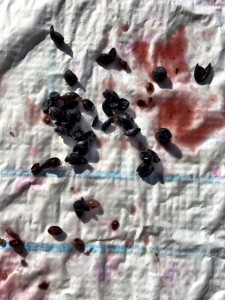

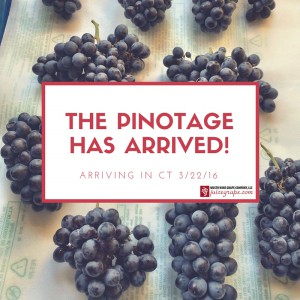
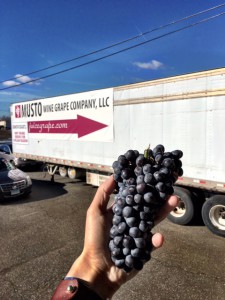

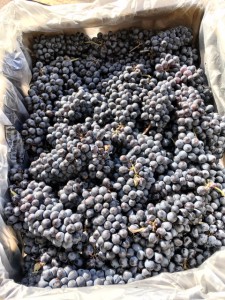
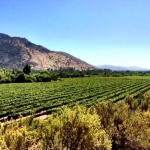
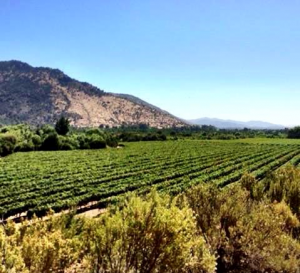
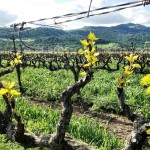

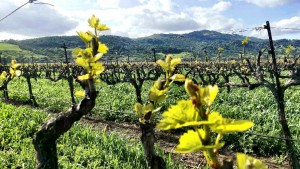
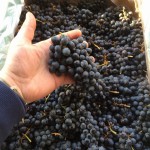
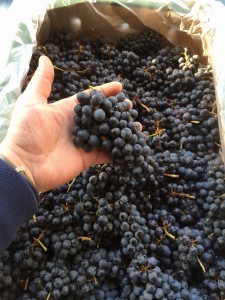


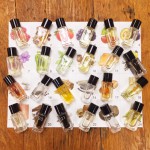
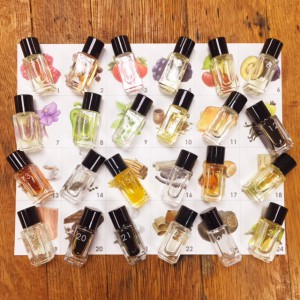
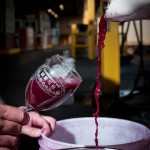
Recent Comments